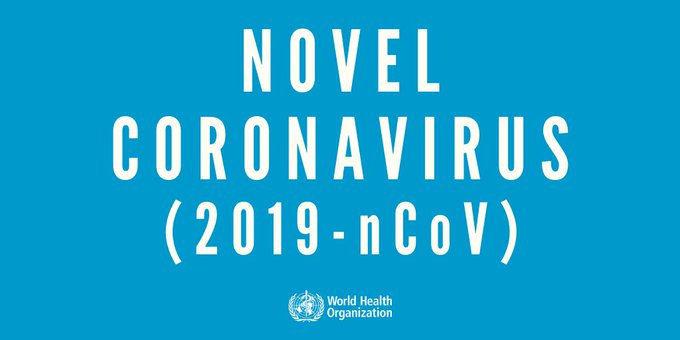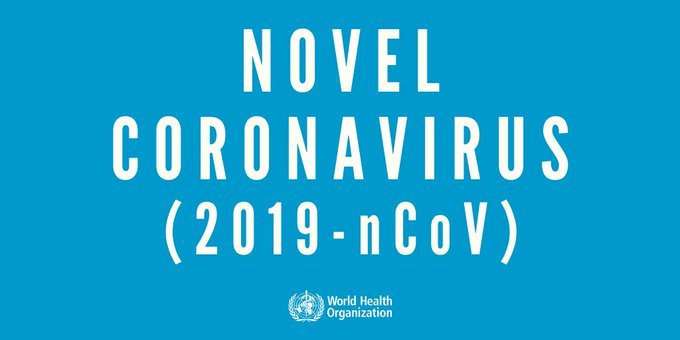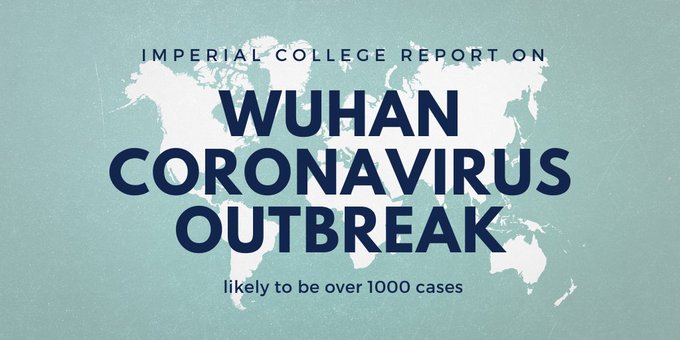Jan 23 (IndiaToday) – The outbreak of a new ‘mysterious’ virus named 2019-novel coronavirus (2019-nCoV) in China has raised alarm bells among health officials the world over as number of people infected and the resultant death toll continues to rise.
As on January 21, six people have died and close to 291 infected by 2019-nCoV, a new strain of coronaviruses that is reported to have infected humans for the first time.
Most of these cases have been reported in Wuhan, a major city in China’s Hubei Province, where the infection started. All six deaths were reported in Wuhan.
Though health officials are still tracing the exact source of this outbreak, initial investigations have indicated it started at the Huanan Seafood Wholesale Market in Wuhan. Most of the infected patients in Wuhan had either worked or visited this market. It has been shut since January 1.
Besides Wuhan, novel coronavirus cases have also been reported in Beijing, Shanghai, Guangdong, Zhejiang and Tianjin. Authorities have also identified suspected cases in other parts of China.
Outside China, two cases have been reported in Thailand, one each in Japan, Taiwan and South Korea among people returning from Wuhan. The Philippines too identified its first suspected case of 2019-novel coronavirus on January 21.
Total cases: 291 (approx)
Wuhan: 258
Beijing: 05
Guangdong: 14
Shanghai: 02
Tianjin: 02
Thailand: 02
Japan: 01
South Korea: 01
Taiwan: 01
Faced with this new health emergency, scientists in China and elsewhere are brainstorming to find effective measures to identify the virus’ source and contain its impact.
On January 20, China confirmed that 2019-nCoV can transmit between humans (it was earlier believed to transmit only from animals to humans). This is a worrying development because it means the viral infection may spread further and much more rapidly, especially in the backdrop of the ongoing yearly migration in China on account of the Chinese New Year festivities when millions of people travel across China.
The World Health Organisation (WHO) has convened a meeting of its Emergency Committee on Wednesday to decide whether the outbreak should be declared an international health emergency.
 World Health Organization (WHO)
World Health Organization (WHO)✔@WHO
BREAKING: WHO Director-General @DrTedros will convene an Emergency Committee on the novel #coronavirus (2019-nCoV) under the International Health Regulations.
The Committee will meet on Wednesday, 22 January 2020.
The Emergency Committee on the novel #coronavirus (2019-nCoV) will ascertain whether the outbreak constitutes a public health emergency of international concern, and what recommendations should be made to manage it
Usually, these declarations are made for epidemics of severe diseases that threaten to cross borders and require an internationally coordinated response. Previous global emergencies have been declared for crises including the ongoing Ebola outbreak in Congo, the emergence of Zika virus in the Americas in 2016 and the West Africa Ebola outbreak in 2014, the Associated Press reported.
Several Asian countries, including India, have issued health advisories, and many have started screening passengers arriving from China at their airports. On January 17, three major airports in the US-Los Angeles, New York and San Francisco-started screening people arriving from Wuhan.
The World Health Organisation (WHO) too has said the infection may spread to other places, and has issued interim guidelines based on the limited information available about 2019-novel coronavirus. It has however not called for any trade or travel restrictions so far.
WHAT IS 2019-NOVEL CORONAVIRUS?
The 2019-nCoV is a new strain of cornoviruses and has not been previously seen in humans. Cornoviruses form a large family of viruses and the illness they cause can range from common cold to more severe diseases such as the Middle East Respiratory Syndrome (MERS-CoV) and Severe Acute Respiratory Syndrome (SARS-CoV).
These viruses are zoonotic, which means they are transmitted from animals to humans.
While the exact source (i.e. the animal from which it started) of 2019-nCoV is yet to be identified, other strains of coronoviruses have previously been seen to be transmitted from civet cats to humans (in the case of SARS-CoV) and from dromedary camels to humans (in the case of MERS-CoV).
These aren’t the only form of coronaviruses. There are many that circulate among animals but have not yet infected humans.
The WHO had earlier said there was no clear evidence of any human-to-human transmission of this virus, but on January 20, Chinese health officials confirmed they have identified some cases of human-to-human transmission.
WHAT CAN 2019-nCoV DO?
Since this is the first time 2019-nCoV is reported to have infected humans, there is limited information on the exact range of illness the virus can cause. Its effects can range from cough and fever to kidney failure and even death.
The WHO has listed the following common signs observed in people infected by 2019-nCoV:
- Fever
- Cough
- Shortness of breath and breathing difficulties
- Pneumonia
- Severe acute respiratory syndrome
- Kidney failure
- Death
To contain the viral infection, health officials in China have isolated the infected patients who are being treated at various medical institutions in Wuhan.
WHERE DID THE OUTBREAK START?
On December 8, 2019, a patient in Wuhan city reportedly complained of pneumonia-like symptoms and sought medical help at a local hospital. Within days, many others reported similar problems, prompting health officials to launch an investigation.
On December 31, China informed the WHO’s country office about these pneumonia cases emanating from “unknown causes” in Wuhan.
Taking note of the matter and the limited information available, the WHO issued interim guidelines for all countries.
On January 7, Chinese authorities said they have identified 2019-nCoV as the cause of the pneumonia. However, experts are yet to identify the source of 2019-nCoV i.e. the animal from which it transmitted to humans.
The exact source of the 2019 novel coronavirus remains to be traced but health officials in Wuhan have identified that most patients had either worked at or visited the Huanan Seafood Wholesale Market in the city.
Six days later, on January 12, in a statement the WHO said national health officials in China have reported 41 confirmed cases related to this new type of pneumonia. Of these 41 patients, seven were severely ill.
On January 18, Wuhan Municipal Health Commission issued a statement saying four fresh cases have been reported. A day later, the commission released another statement informing 17 fresh cases, thus taking the overall count in Wuhan to 62.
By January 21, the number of cases rose to 217, with 198 in Wuhan alone.
These apart, two cases have been reported in Thailand and one each in Japan and South Korea.
CASES OUTSIDE CHINA
Two confirmed cases have been reported in Thailand, besides one each in Japan, Taiwan and South Korea so far. All of these patients had recently returned from Wuhan and are being treated. The Philippines too has identified one suspected case of novel coronavirus.
The patient in Japan, a man, had travelled to Wuhan in late December and developed fever on January 3 when he was still in Wuhan. WHO says as per information received from Japan, the man didn’t visit the Huanan Seafood Wholesale Market (to which most cases have been linked) or any other live animal market in Wuhan. He has also denied having close contact with any person suffering from pneumonia.
He returned to Japan on January 6 and tested negative for influenza. When his condition didn’t improve, he visited a local hospital on January 10 and a chest x-ray revealed abnormal infiltrates. Following this, he was admitted and on January 14, the doctor attending him notified his case to a local public health authority as an unidentified serious infectious illness’.
When his samples were collected and tested by the National Institute of Infectious Diseases, very small amount of 2019-nCoV RNA were identified.
In Thailand, the first confirmed case of 2019-nCoV infection was identified on January 13 (a 61-year-old woman) and the second case on January 17 (a 74-year-old woman). They had both returned from China.
As a precautionary measure, Thai authorities have started screening passengers at airports and thousands of passengers have been screened since January 3.
PRECAUTIONS YOU MUST TAKE
Wuhan is a major city in China which is also a hub of international and domestic travels. Much remains to be known about how exactly the 2019-nCoV infection transmits between humans and animals, and the extent of human-to-human transmissions.
The WHO has issued an advisory to reduce risk among those travelling from or to the affected regions.
- As per WHO, you should observe the following precautions:
- Avoid close contact with people suffering from acute respiratory infections
- Wash hands frequently, especially if there is a direct contact will ill people or exposure to their environment
- Avoid close contact with live or dead farm and wild animals
- If you have symptoms of acute respiratory infection, you should practice cough etiquette (maintain distance, cover cough and sneezes with disposable tissues or clothing and wash hands).
- If you are visiting a live animal market, a wet market or any animal product market, practice general hygiene like regular hand washing with soap and potable water after touching animals and animal products.
- Avoid touching eyes, nose or mouth with hands and avoid any contact with sick animals or spoiled animal products.
- Avoid consuming raw or undercooked animal products and handle raw meat and milk with care.
MANY MORE AFFECTED THAN OFFICIAL FIGURES, CLAIMS STUDY
As on January 21, there were around 220 confirmed cases of infections arising from 2019-novel coronavirus.
However, diseases monitoring experts in the UK have challenged this number and presented a study claiming that the actual number of patients infected can be much more than the official figures.
On January 17, researchers at the MRC Centre for Global Infectious Disease Analysis at the Imperial College London presented a study and said they estimate that a total of 1,723 people had contracted the infection in Wuhan city by January 12.
This number was arrived at by factoring in Wuhan’s population, the number of people travelling out (internationally) from the city and the three cases reported outside China. (Details of the methodology can be found here.)
Size of Wuhan outbreak of a novel #coronavirus estimated from the three cases detected outside China: Likely to be over 1000 cases. @imperialcollege @mrc_outbreaks report released today
https://www.imperial.ac.uk/mrc-global-infectious-disease-analysis/news–wuhan-coronavirus/ …
“It is likely that the Wuhan outbreak of a novel coronavirus has caused substantially more cases of moderate or severe respiratory illness than currently reported,” the study said.
Speaking to BBC, Prof Neil Frugson, who was part of the study, said he was worried by the fact that three cases had been reported outside China (all comprising people who had been to Wuhan). “For Wuhan to have exported three cases to other countries would imply there would have to be many more cases than have been reported,” Prof Frugson told the BBC.
THREAT FROM YEARLY MIGRATION
With the ongoing festivities of the Chinese New Year, there is a heightened risk of 2019-nCoV infection spreading to other regions because in the coming weeks people (especially non-natives of Wuhan) will be travelling home for vacations.
China’s Transport Ministry has estimated that nearly 3 billion trips will be made during the festivities which trigger the world biggest annual human migration.
Officials have said extra precautions will be taken this year due to the novel coronavirus outbreak in Wuhan.
“Transport hubs will strengthen disinfection, monitoring and prevention measures, Wang Yang,” the Chinese Ministry of Transport’s chief engineer, was quoted as saying by the Associated Press. “The emergence of the epidemic may cause panic among people, especially in areas where people are concentrated during the Spring Festival travel period,” Wang said.
The WHO too has said that the annual human migration for these festivities can increase the risk of 2019-nCoV cases being reported from elsewhere.
With inputs from The Associated Press and Reuters.
(This article has been updated with latest figures as on January 21.)

































































